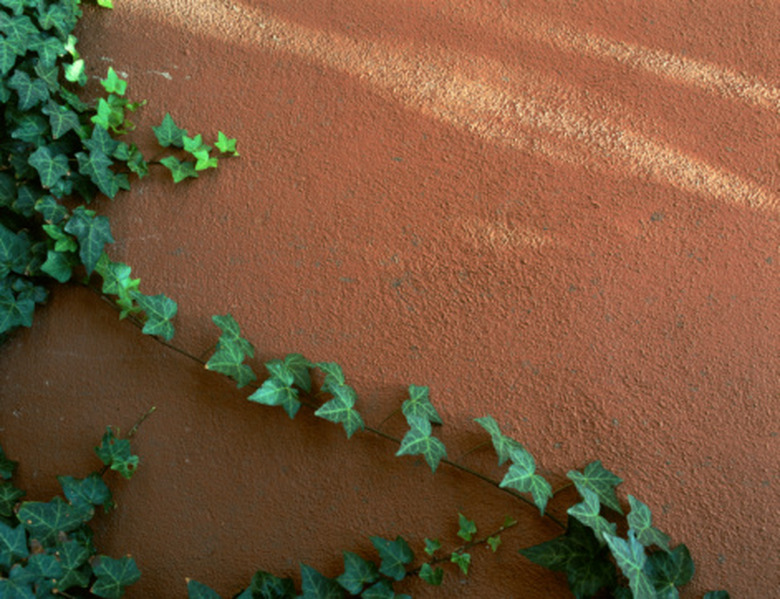How To Draw Ivy On A Wall
Pick a location to hand draw a vine of ivy leaves, such as a wall in the home, office, or restaurant. Decide on using a ruler to create straight stems or drawing freehand. Besides plant life, trellises, arbors, and fences can be drawn depicting the ivy winding and climbing around their structures.
Step 1
Refer to an ivy plant or picture that is easy to view.
Step 2
Draw the stem of the vine on the wall using a pencil and a ruler for a straight line or draw it freehand.
Step 3
Create crosses on both sides of the line, wherever there is an ivy leaf.
Step 4
Sketch a curved line on the two bottom cross lines, extending from the point on the vine's stem to the end of the line, so they attach and form a dimensional vine and stem.
- Pick a location to hand draw a vine of ivy leaves, such as a wall in the home, office, or restaurant.
Step 5
Connect the line to the left top cross line by creating a curve that travels inward and then back out. Refer to the ivy plant reference for how far inward to make the line. Repeat on the right side.
Step 6
Create another line extending from the left top cross line to vine stem. Continue the line to extend down to the right top cross line. This completes the ivy leaf. Adjust as necessary, referring to the ivy plant for reference.
- Connect the line to the left top cross line by creating a curve that travels inward and then back out.
- Continue the line to extend down to the right top cross line.
Step 7
Add veins to the leaf by drawing lines extending outward from the stem line, then drawing smaller lines extending from the vein lines.
Step 8
Reinforce the lines by going back over with a pencil. Erase unnecessary lines.
Grow Ivy On Walls
The classic picture of old brick buildings with ivy climbing up the walls is a lovely one, but like most idealized views there can be problems hiding behind the beauty. It's still possible for you to reproduce that classic look of vines trailing over your buildings, but It's important that you research growing problems and alternative solutions before doing any planting. Ivy's tendrils can work their way into small cracks and pull the siding from the building * Wooden fences or walls. It's this quick-growing habit that causes so many problems with this ivy.
That doesn't mean you have to give up on your landscaping dreams, though. Boston ivy ( Parthenocissus spp.) When you see photos of most of the oldest universities in the country, Boston ivy is the plant you'll spot covering their walls.
* Moonflower _(Ipomoea alba)_ is an annual vine that simulates ivy and produces fragrant white flowers that bloom all night long. * Climbing roses (Rosa setigera) have been used to cover cottages and larger buildings for centuries. Plant ivy at the base of a shed or children's playhouse. Install a series of arbors to create an ivy tunnel or allow the vines to create a shaded roof over an open patio.
- Add veins to the leaf by drawing lines extending outward from the stem line, then drawing smaller lines extending from the vein lines.
- When you see photos of most of the oldest universities in the country, Boston ivy is the plant you'll spot covering their walls.
* Moonflower _(Ipomoea alba)_ is an annual vine that simulates ivy and produces fragrant white flowers that bloom all night long. * Climbing roses (Rosa setigera) have been used to cover cottages and larger buildings for centuries.
Things Needed
- Ivy plant
- Picture of an ivy plant
- Pencil
- Ruler
- Eraser
